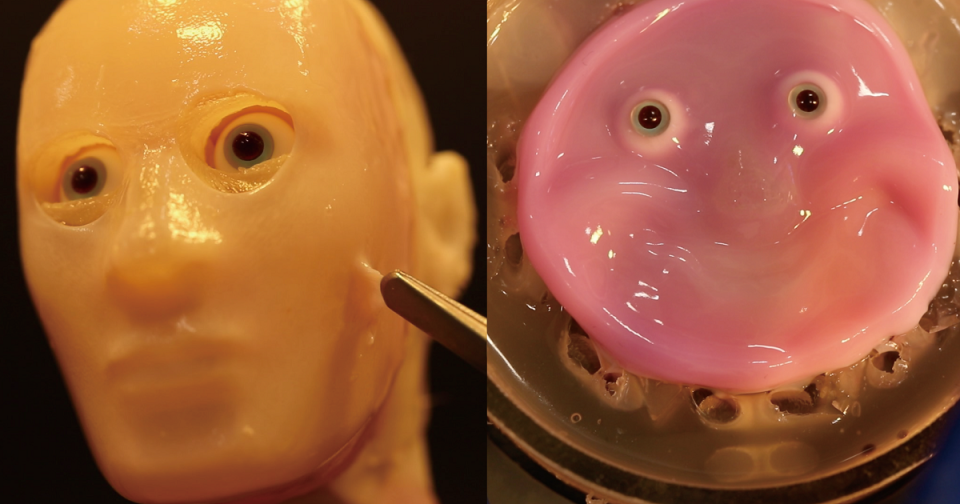Scientists Attached Living, Lab-Grown Skin to a Robot's Face and It Looks Like It Craves the Sweet Release of Death
Face/Off
Remember that one movie where a killer robot is disguised as a human using "living tissue" over its "metal endoskeleton"?
Lest you interpreted that as a cautionary tale, scientists at the University of Tokyo have gone full Torment Nexus by growing living skin in a lab and attaching it to a robotic face, so that it can create rudimentary facial expressions.
It'd be one thing if the resulting creation looked like a skincare YouTuber. But instead, we think it's fair to say that this thing appears to crave the sweet release of death. No, seriously, just behold this visage.

Skincare Routine
The team behind the work says it could lead to robots with new capabilities like self-healing and an advanced sense of touch — plus, they say, bots that look more like humans, though we'll withhold judgment on that last one until we've seen evidence other than the above.
"Manipulating soft, wet biological tissues during the development process is much harder than people outside the field might think," said professor Shoji Takeuchi, the lead researcher behind the work at the University of Tokyo, in a statement about the work. "For instance, if sterility is not maintained, bacteria can enter and the tissue will die. However, now that we can do this, living skin can bring a range of new abilities to robots. Self-healing is a big deal — some chemical-based materials can be made to heal themselves, but they require triggers such as heat, pressure or other signals, and they also do not proliferate like cells. Biological skin repairs minor lacerations as ours does, and nerves and other skin organs can be added for use in sensing and so on."
It does sound like they're working toward the goal of a more human-like appearance, though, which sounds like a provocative vision for actual cyborg robots that combine the strengths of both machine and biology.
"In this study, we managed to replicate human appearance to some extent by creating a face with the same surface material and structure as humans," said Takeuchi. "Additionally, through this research, we identified new challenges, such as the necessity for surface wrinkles and a thicker epidermis to achieve a more humanlike appearance. We believe that creating a thicker and more realistic skin can be achieved by incorporating sweat glands, sebaceous glands, pores, blood vessels, fat and nerves. Of course, movement is also a crucial factor, not just the material, so another important challenge is creating humanlike expressions by integrating sophisticated actuators, or muscles, inside the robot. Creating robots that can heal themselves, sense their environment more accurately and perform tasks with humanlike dexterity is incredibly motivating."
More on robots: Video Shows China's Rifle-Equipped Robot Dog Opening Fire on Targets


